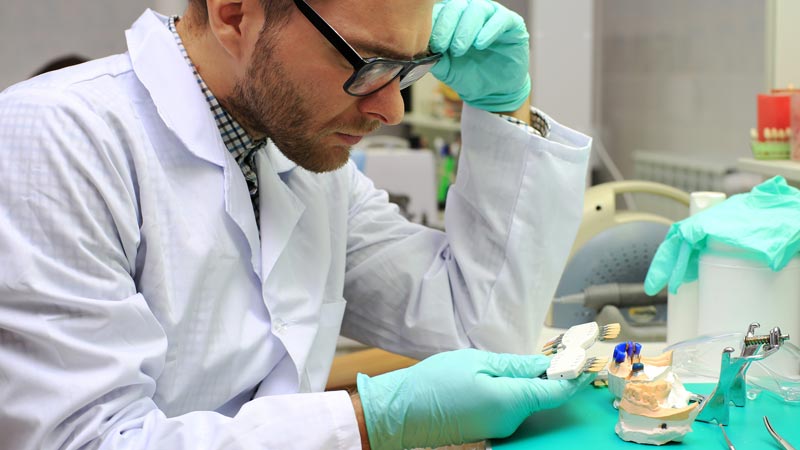Eco-friendly practices in modern dental laboratories are essential for reducing environmental impact and promoting sustainability. Here are some strategies and practices that can help dental labs become more eco-friendly:
1. Sustainable Materials
- Biodegradable Materials: Use biodegradable and eco-friendly materials for packaging and shipping.
- Eco-Friendly Dental Materials: Choose dental materials that have a lower environmental impact, such as biocompatible and non-toxic substances.
2. Waste Reduction and Management
- Minimize Waste: Implement strategies to reduce waste, such as digital impressions that eliminate the need for traditional impression materials.
- Proper Disposal: Ensure that hazardous waste, such as dental amalgam, is disposed of according to environmental regulations.
- Recycling Programs: Establish recycling programs for materials like paper, plastic, and metals used in the lab.
3. Energy Efficiency
- Energy-Efficient Equipment: Invest in energy-efficient equipment and appliances to reduce electricity consumption.
- LED Lighting: Use LED lighting, which is more energy-efficient and has a longer lifespan than traditional lighting.
- Green Building Design: Incorporate energy-efficient designs and materials in the lab’s construction or renovation.
4. Water Conservation
- Efficient Water Use: Implement water-saving practices and equipment to reduce water consumption.
- Water Recycling Systems: Use water recycling systems to reclaim and reuse water within the laboratory.
5. Digital Workflow
- Digital Impressions and Models: Transition to digital impressions and models to reduce the use of physical materials and waste.
- Paperless Office: Move towards a paperless office by using digital records, electronic communication, and cloud storage.
6. Sustainable Supply Chain
- Eco-Friendly Suppliers: Partner with suppliers who prioritize sustainability and offer eco-friendly products.
- Local Sourcing: Source materials and services locally to reduce the carbon footprint associated with transportation.
7. Green Practices in Daily Operations
- Reduce, Reuse, Recycle: Implement the 3Rs in daily operations, such as reusing materials when possible and recycling waste.
- Eco-Friendly Cleaning Products: Use environmentally friendly cleaning products that do not contain harmful chemicals.
8. Employee Involvement and Training
- Staff Training: Educate and train staff on eco-friendly practices and the importance of sustainability.
- Incentives: Encourage employees to participate in sustainability initiatives by offering incentives or recognition for eco-friendly practices.
9. Sustainable Transportation
- Carpooling and Public Transport: Encourage carpooling, use of public transportation, or biking to work to reduce the carbon footprint.
- Eco-Friendly Vehicles: If the lab has vehicles, consider transitioning to electric or hybrid models.
10. Environmental Certifications and Standards
- Green Certifications: Pursue environmental certifications such as LEED (Leadership in Energy and Environmental Design) to demonstrate commitment to sustainability.
- Compliance with Standards: Ensure compliance with environmental standards and regulations to minimize the lab’s environmental impact.
11. Community Engagement
- Public Awareness: Participate in community programs that promote environmental awareness and sustainability.
- Educational Initiatives: Educate clients and the broader community about the importance of eco-friendly practices in dentistry.
Summary
By adopting these eco-friendly practices, dental laboratories can significantly reduce their environmental impact and contribute to a more sustainable future. Embracing sustainability not only helps the environment but can also improve the lab’s reputation and appeal to environmentally conscious clients.

